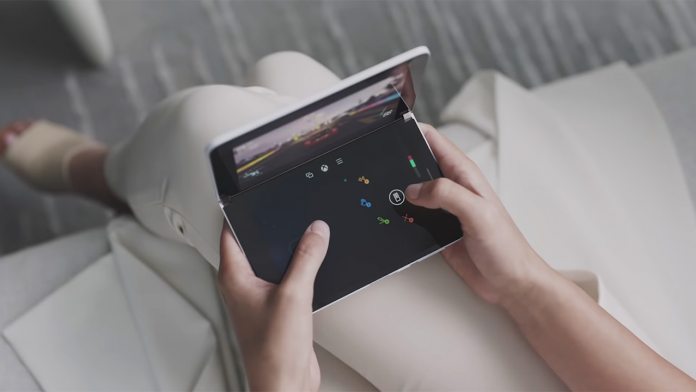It's only been two weeks since Microsoft launched out its latest Surface products, including the Surface Duo and Surface Neo. This pair of folding devices, one a 2-in-1 and the other a smartphone, will not launch until 2020. Microsoft was generally quite on the finer details of the Duo and Neo, but more information is emerging through a Microsoft Patent.
Arguably the Surface Duo is the most exciting of the pair, considering it is Microsoft's return to the smartphone market. It is a dual-screen Android handset that will be powered by a Qualcomm Snapdragon 855. It will also have a 5.3-inch display that is 8.3-inches when opened.
As for the Surface Neo, it looks like the Duo but in a tablet form factor. It's running Windows 10X and not Android, with an Intel Lakefield processor running the show. Surface Neo has a pair of 9-inch screens on a 360-degree hinge.
Looking at the new Microsoft Patent, the company wants to solve screens randomly switching orientation. Anyone who uses a smartphone will know sometimes the screen with switch between landscape and portrait modes with even the slightest tilt.
Solving the Screen Problem
In terms of the Surface Duo and Surface Neo, these re-orientations will amplify the problem. Screens switching on a dual screen machine will be a massive frustration for users. Microsoft's patent aims to ensure that problem will not happen.
“Thus, examples are disclosed in that which relate to sensing the relative orientation between portions of a computing device. One example provides a computing device comprising a first portion and a second portion, wherein the first portion comprises a first three-dimensional orientation sensor system and the second portion comprises a second three-dimensional orientation sensor system first and second three-dimensional orientation sensing systems, and a relative orientation between the first and second sections of the three-dimensional orientation sensing systems.
To detect other orientation conditions, a computing device may include a sensor system mounted on a mechanical hinge connecting the sections. However, the physical arrangement of the sensor system on the hinge may be impractical. Alternatively or additionally, a computing device may include acceleration sensors each housed in each section. Such a configuration may allow a relative orientation to be determined based on the movements detected by the acceleration sensors. However, in some orientations, the computing device may not be able to distinguish the respective orientations of the individual sections, eg, if the respective acceleration sensors are aligned, that the gravitational vector of each section does not change when rotating (eg when both gravitational vectors are directed along a hinge connecting the sections). In such situations, a computing device may not respond as intended to rotational movement between sections.”
Last Updated on April 9, 2020 10:16 am CEST by Luke Jones






